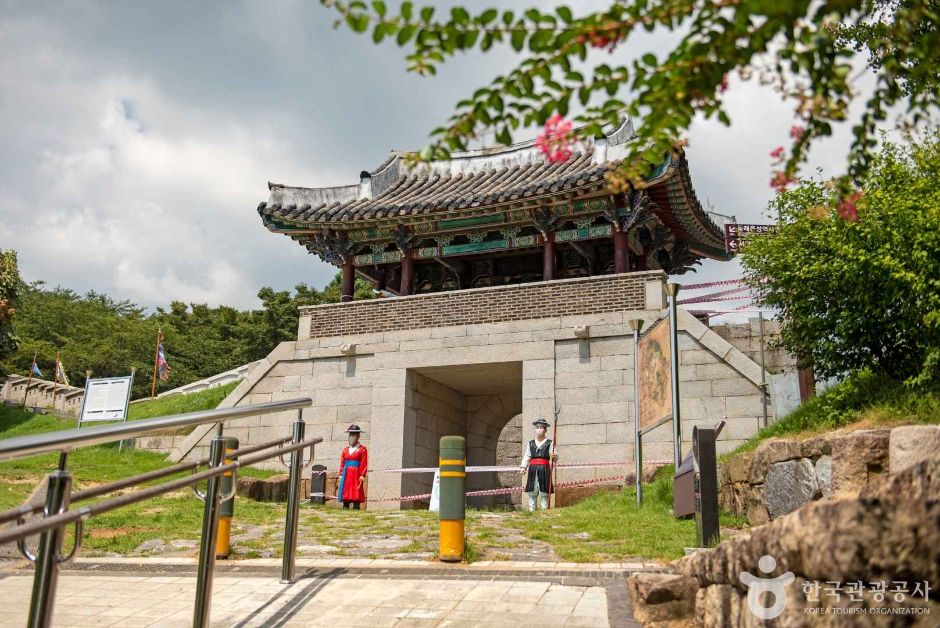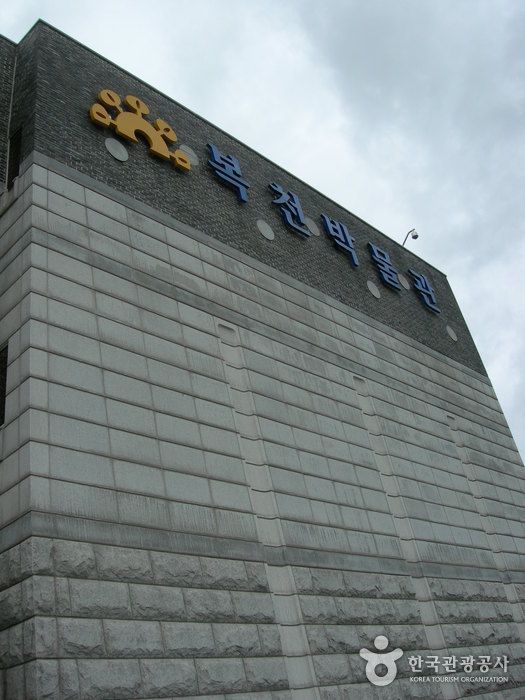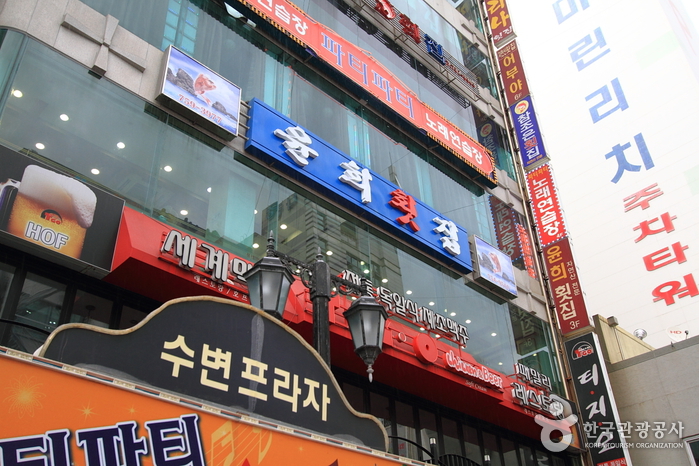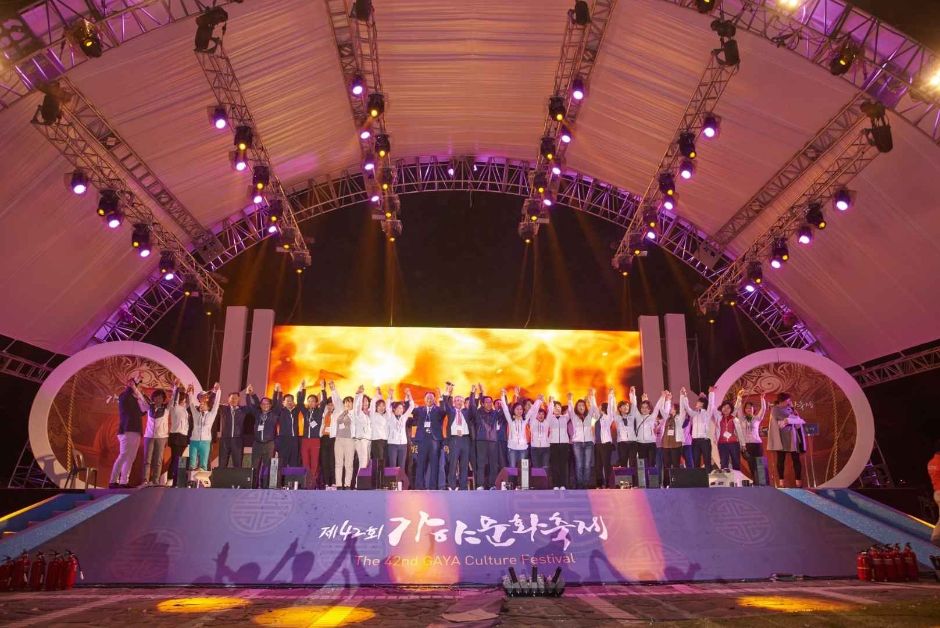Site of Dongnaeeupseong Walled Town (동래읍성지)
15.3Km 2024-09-26
48-2 Myeongnyun-dong, Dongnae-gu, Busan
Site of Dongnaeeupseong Walled Town, built towards the end of the Goryeo dynasty and the early Joseon dynasty, was a significant fortress during the Imjin War in 1592. It served as the main battleground where civilians, officials, and soldiers united to resist the Japanese forces. Recognizing the strategic importance of the Dongnae area, a much larger fortress was constructed in 1731, replacing the original structure from one built during war. Today, only traces of the fortress remain, with the Bukmun Gate, Insaengmun Gate, Dongjangdae Command Post, Seojangdae Command Post, and Bukjangdae Command Post having been restored.
Geumgang Park (금강공원)
15.5Km 2024-03-05
155 Ujangchun-ro, Dongnae-gu, Busan
+82-51-860-7880
Geumgang Park is a park located at the foot of Geumjeongsan Mountain, near the Dongnae Hot Springs Area. It features lush forests of naturally grown trees, majestic cliffs, and valleys creating breathtaking scenery. Throughout the park, there are numerous historical relics and ruins. A cable car is available for visitors to ascend Geumjeongsan Mountain, offering panoramic views of downtown Busan. Nearby attractions include the Busan Folk Art Center, Busan Marine Natural History Museum, and Geumgang Botanical Garden.
Gimhae Korean-style house [Korea Quality] / 김해한옥체험관 [한국관광 품질인증]
15.5Km 2023-10-25
40 , Wangneung-gil, Gimhae-si, Gyeongsangnam-do
+82-55-322-4735~6
The Hanok Experience Center in Gimhae, Gyeongsangnam-do, offers guests a taste of old-time hanok life. Rooms are furnished with traditional items, while the spacious wooden floor can be used as a meeting room. Rooms in the sarangchae are on the small side but have an upper floor with scenic views. The room in the annexe building has a traditional sleeping mat surrounded by a large folding screen, and feels like a scene from a historical drama. Each room has a modern bathroom, There is a traditional experience program, and information services in English and Japanese.
Busan Bokcheon Museum (복천박물관(부산))
15.5Km 2021-03-15
63, Bokcheon-ro, Dongnae-gu, Busan-si
+82-51-554-4263
Bokcheon Museum, an archaeological museum in Busan, opened its doors to the public on October 5, 1996 as a tribute to the long-honored history of Busan from the Samhan Era to the Three Kingdoms Era. The museum displays relics and artifacts excavated from the ancient burial ground in Bokcheon-dong. As many as 169 artifact pieces, including diverse earthenware, weapons, and ruins, found in a series of seven excavations are on display throughout the museum. The array of relics and tombs discovered in the Ancient Tombs in Bokcheon-dong, designated as Historic Site No. 273, are essential to solving the mystery of the Gaya Kingdom, which remains an uncharted, secret land.
Since opening, the museum has been conducting further research at the site of the burial grounds and remains in the local area to better understand the antiquated history and culture of Busan as well as the ancient kingdom of Gaya. The museum, as a reputable venue for historical education and exploration, also holds academic seminars and special exhibitions to share the research results and achievements with scholars and the community alike.
Tomb of King Suro (수로왕릉)
15.6Km 2024-01-23
26 Garak-ro 93beon-gil, Gimhae-si, Gyeongsangnam-do
+82-55-332-1094
King Suro founded the Garak Kingdom in AD 42 and married Heo Hwang-ok, a princess from the Indian country of Ayuta, in AD 48. He was the founder of the Gimhae Kim family. Heo Yeop, a Yeongnam governor, gave the tomb its current look in the 13th year of the reign of King Seonjo (1580). The tomb compound includes various buildings, including the Sungseonjeon (where the ancestral tablets of King Suro and his queen are kept), Anhyanggak, Jeonsacheong, and Jegigo, as well as stone structures, such as a sindobi (tombstone) and gongjeokbi (monument established to pay homage the deceased). The tombstone in front of the royal tomb was built in the 25th year of the reign of King Injo (1647) of the Joseon dynasty. The name Sungseonjeon was bestowed on the tomb by King Gojong in the 21st year of his reign (1884).
Sureungwon Garden (수릉원)
15.6Km 2024-01-23
35 Bunseong-ro 261beon-gil, Gimhae-si, Gyeongsangnam-do
Sureungwon Garden is a place themed around the meeting between King Suro, the founder of Gaya, and Queen Heo, who was the princess of Ayuta Kingdom, known as India. The name Sureungwon Garden also contains the meaning of an elegant forest where King Suro and Queen Heo walked together. An ecological park measuring 39,600 m2 has been created along a low ridge that connects the Tomb of King Suro, an important cultural heritage of the Gaya period; the Ancient Tombs in Daeseong-dong, the tombs of the Gaya kings; and the Bonghwang-dong Historic Site. It was created by representing the maritime kingdom of Gaya, imagining a pond of the garden where King Suro and Queen Heo used to walk, and planting prickly waterlilies and yellow floating hearts that are believed to have inhabited wetlands in the Gaya period. Trails along the cozy forest and pond make it easy to look around comfortably.
Olive Young - Busan Oncheon Branch [Tax Refund Shop] (올리브영 부산온천점)
15.6Km 2024-06-26
#119~#121, 9, Oncheonjang-ro 65beon-gil, Dongnae-gu, Busan
-
Yunhui Hoetjip (윤희횟집)
15.6Km 2016-10-14
17-17, Gwanganhaebyeon-ro 344beon-gil, Suyeong-gu, Busan
+82-51-759-3977, +82-51-754-9510
Yunhi Hoetjip is located in Millak/Minrak Waterfront Park and specializes in naturally caught raw fish and maeun-tang (spicy fish stew). Their popular attraction is that customers are allowed to choose their fish directly while they're still alive in the tank.
Gaya Culture Festival (가야문화축제)
15.6Km 2024-10-08
35 Bunseong-ro 261beon-gil, Gimhae-si, Gyeongsangnam-do
+82-55-330-6840
The Gaya Culture Festival celebrates the Gaya Kingdom, founded by King Kim Suro in AD 42, and its 500-year history. Gaya was quite advanced in the production of earthenware and iron implements, evidenced by the many artifacts found from that time. Through the Gaya Culture Festival, the region is continuing to preserve, build on, and develop the Gaya culture and heritage. The Gaya Culture Festival asserts Gaya’s rightful place alongside the Goguryeo, Baekje, and Silla kingdoms.
Olive Young - Inje Univ. Branch [Tax Refund Shop] (올리브영 인제대)
15.7Km 2024-04-17
190, Inje-ro, Gimhae-si, Gyeongsangnam-do
-


![Gimhae Korean-style house [Korea Quality] / 김해한옥체험관 [한국관광 품질인증]](http://tong.visitkorea.or.kr/cms/resource/81/3016981_image2_1.jpg)



 English
English
 한국어
한국어 日本語
日本語 中文(简体)
中文(简体) Deutsch
Deutsch Français
Français Español
Español Русский
Русский